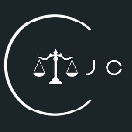Introduction
In a scenario where one is entrusted with property during his work, he may become tempted to use the property for his own gain instead. This is especially true for people working in positions of power, such as a director of a company,¹ a lawyer managing funds for his client,² or a public servant entrusted with taxpayer’s money. This is the behaviour that the offence of Criminal Breach of Trust (CBT) targets. As stated in Lam Leng Hung,³ CBT targets the accused’s betrayal of trust after he has been entrusted with property and he uses the property for his own gain.
The recent spate of individuals in positions of power being arrested for committing CBT have rocked the trust of the public. Between 2017 to 2021, around 18,700 instances of white-collar crimes (such as CBT) occurred with a total subject matter value of around $4.49 billion.⁴ These recent trends serve as a strong reminder of the need for accountability, transparency, and professionalism for those in positions of power. Where the public relies on one’s trade or title as an indicator of trustworthiness and integrity, it is critical for society that these functions are performed honestly.⁵
This article explains the offence of CBT, the policy reasons underlying CBT, and the importance of preventing CBT in the way forward.
1. What is CBT?
CBT is an offence in the Penal Code which is defined in s 405. Breaking down s 405 into its constituent elements, CBT will read as follows:
(a) The accused was entrusted with property or had dominion over the property.
(b) The accused used the entrusted property in violation of a direction of law, or an express or implied contract which prescribed the mode in which such trust was supposed to be discharged, or intentionally causes any other person to do so.
(c) The accused was dishonest in doing the actions described in (b).
s 405 also illustrates certain situations where CBT is committed. For example, the executor of a will who misappropriates the property of the deceased (illustration a), a warehouse owner who temporarily holds onto furniture for his client and sells the furniture (illustration b), or an investment agent who receives money from his client intended for investment and the money was used for the agent’s own purposes (illustration c) would all have committed CBT.
Having outlined the 3 elements of CBT, their legal meaning will be further explained in turn.
1.1. Element (a): Is complete control over the property required?
The essence of CBT targets the betrayal of trust committed by someone after he has been entrusted with property.⁶ Therefore, it is not necessary for there to be complete control over the property for the property to be “entrusted” to the individual.
This was clarified in Lam Leng Hung, where the issue was whether the group of accused making up a minority of a managerial board of the organisation could be said to possess dominion over the funds of the organisation. The group of accused in that case argued that they lacked control given their minority position, as the plans they devised for the alleged misappropriation had to be approved by other innocent directors on the board before implementation. However, the court rejected this argument, stating that the element of dominion is satisfied even where the dominion is concurrently exercised by other individuals.⁷ Where a group of persons has dominion over the property, each individual member of the group has the requisite control over the property for this element of dominion to be satisfied. The other innocent directors may have facilitated the CBT, but this does not absolve the offenders of liability. Further, allowing the accused to rely on the other directors’ innocence to absolve themselves of criminal liability also runs counter to the purpose of CBT offences which is to punish the betrayal of the trust bestowed upon the individual.
1.2. Element (b): What is the direction of the law that must be violated?
For CBT to occur, there must be an entrustment of property with a specific instruction of how that property is to be used. The accused commits CBT if he uses the property in a way different from that instruction. This instruction may be contained in a contract between the two parties. Alternatively, this instruction can be provided for by a direction of law, which is to say in accordance with a statute. Therefore, much will turn on what a statutory provision expressly or impliedly prohibits (or allows).
For instance, in Cheam Tat Pang,⁸ the 2 accused were directors of a company who used the company’s funds to purchase the shares of a Hong Kong company (LMP). The company’s board of directors approved the purchase of the shares, but the 2 accused effected the purchase through the instrument of APL, another company that the 2 accused had an interest in. This allowed them to make secret profits in their capacity as shareholders of APL. The Prosecution argued that the two violated a direction of law, specifically s 157(1) of the Companies Act, which stated directors of a company must exercise reasonable diligence and honesty in the discharge of their duties. However, this argument failed as it was held that s 157(1) of the Companies Act did not state any specific way the trust was to be discharged. There must be a degree of specificity in how the accused ought to have handled the property entrusted to him; vague directives of “honesty” and “reasonable diligence” are not specific enough.
In contrast, the direction of law relied upon in Tong Keng Wah⁹ was sufficiently specific to have imposed a prohibition against the impugned behavior. In Tong Keng Wah, the accused was a police inspector who committed CBT by failing to return his service revolver and 12 rounds of ammunition after being dismissed from the force. The Prosecution argued that he violated s 24(1) of the Police Force Act which specifically stated every police officer who leaves the force must return his arms and his ammunition. As noted by the court in Cheam Tat Pang,¹⁰ it was not a general directive to maintain good order and discipline like s 157(1) of the Companies’ Act.
1.3. Element (c): What makes one dishonest in the eyes of the law?
The legal meaning of “dishonesty” was clarified in Lam Leng Hung¹¹ to refer to an individual doing an act with the intention to obtain something he was not legally entitled to, or to deprive someone of property the person was legally entitled to. In other words, “dishonesty” is concerned with legal entitlement to the property.
Since legal entitlement is the linchpin, a critical consideration is whether the accused knew the act he did (i.e. the alleged misappropriation) was unauthorised.¹² Thus, where it can be shown that the accused genuinely believed the act was authorised, there is no dishonest intention, and this element is not satisfied.
Intention must be separated from the motive of the accused. As noted by the court in Lam Leng Hung,¹³ the reason why the accused did the act is not relevant to what he thought or knew at the time he committed the crime. It is possible for an accused to have benign or even good motives, but still have dishonest intent to misappropriate. This position is also taken in other non-CBT criminal cases, and is justified as allowing private motive to serve as a defence would essentially “allow any man to substitute for law his own notions of right would be in effect to subvert the law.”¹⁴
1.4. Conclusion on the elements of CBT
The essence of CBT to punish the betrayal of trust by those entrusted with property. Therefore, there must first be an entrustment of property to the accused with an accompanying directive of how exactly he was to use the property. The accused must have violated the directive and acquired property he was not legally entitled to possess.
2. Why CBT is a big issue for society
CBT committed by individuals in positions of power threaten to undermine the very foundations of society by eroding the trust of the public. While CBT exists on a “sliding scale of offences”,¹⁵ the most severe offence for CBT under s 409 is committed by those performing public functions or those in esteemed occupations that command the trust of the public.
Turning to the statutory framework of CBT, it is clear that Parliament intended for CBT to have differing levels of severity depending on the class of persons that commits CBT. At the lowest level of severity, CBT committed by individuals hired on an ad-hoc basis attracts a maximum sentence of 7 years’ imprisonment, as stipulated by s 406. Next is s 407, which covers CBT done by someone entrusted with property for transportation or storage, which carries a maximum sentence of 15 years. On the same level there is s 408 which is CBT done by employees, which also has a maximum sentence of 15 years. Finally at the highest end of the spectrum, there is s 409 that targets specific classes of people such as public servants, attorneys, directors, and bankers where CBT would be punishable with a maximum of 20 years’ imprisonment. The common thread in all the classes of people in s 409 is that they are all esteemed occupations that command the trust and respect of the public, so those who choose to enrich themselves by disregarding the faith the public has in them would rightfully deserve a higher sentence.
One would not have to look further than the case of Tan Cheng Yew¹⁶ for the court’s view on CBT committed classes of people specified in s 409. In Tan Cheng Yew, the accused was a lawyer who pocketed his client’s funds to pay off debts he accrued from gambling. He was entrusted with $1.5 million by his client intended to be loaned to a church, which he then converted to his own use. During trial, the accused admitted during cross-examination that he never intended to give the $1.5 million to the church but intended to use the money to pay off his debts.¹⁷ He was also entrusted with $1.9 million from the sales proceeds of the shares owned by his client which he also used to pay off his gambling debts. The accused was found guilty and disbarred from being a lawyer, being sentenced with 13 years imprisonment for his CBT, amidst other charges.
The High Court in Tan Cheng Yew ¹⁸ explained why lawyers such as Tan Cheng Yew need to be punished with a heavier sentence.
“In my view, the mischief that s 409 targets is the commission of CBT by persons who perform certain trusted trades, when they act in the way of their business… Where it is normal for the public to rely on a person’s trade as a mark of his trustworthiness and integrity, and where such trust facilitates commercial transactions, it is important that such transactions are above board. A commission of CBT by a person in the performance of his trade would shake the confidence of the public in those trades and impede the ability of persons in such trades to serve the public. A breach of trust in such circumstances “may have severe … public repercussions” (see Butterworth’s commentary at p 621). Therefore, s 409 provides that CBT committed in the capacity of a public servant or in the way of business of a banker, a merchant, a factor, a broker, an attorney or an agent, would be punished more severely than CBT committed by persons who are trusted on an ad hoc basis under s 406.”
The court’s pronouncement serves as a grave warning to those in esteemed professions not to abuse the trust the public has in them, that the power they possess comes with an equally steep responsibility. The current trend of those in positions of power abusing their power is worrying, such as the Maybank Service Manager who misappropriated more than $1.4 million from a workplace safe,¹⁹ police officers who pocketed restitution money from suspects,²⁰ or a religious teacher who pocketed almost $61,000 from victims.²¹ There is a need to curb CBT in these professions to prevent the reputation of these occupations from being tarnished from a few bad eggs. It is hoped that those in positions of power understand the faith society has in them, and not abuse the trust they command.
3. Conclusion
It is undeniable that the legal system has been effective in arresting those who committed CBT. However, the recent string of CBT committed by those who command the trust of the public struck at the very heart of the integrity of their respective professions. What may be needed is a stern reminder towards those in positions of power that they command the trust of the public, and that the public does not take a betrayal of that trust lightly.
The courts have consistently taken such breaches seriously, imposing sentences that reflect both the severity of the misconduct and the need to deter others from similar acts. Still, as recent cases have shown, even the clearest laws cannot fully prevent abuse when individuals choose to prioritise self-interest over responsibility. This reality calls not just for enforcement, but also for vigilance, accountability, and a broader cultural respect for ethical conduct in every profession.
At the same time, the legal system also recognises the importance of a fair and competent defence, even in cases involving grave allegations such as CBT. Every accused person is entitled to due process, and the role of legal counsel is to ensure that justice is pursued with balance and integrity. This is where the value of seasoned defence lawyers Perth is especially clear. With extensive experience handling complex financial and trust-related offences, legal professionals in this field approach each case with a blend of analytical precision and strategic insight.
Their work is not merely about defending clients—it is about upholding the principles of justice by ensuring that every element of the offence is scrutinised, and that prosecutions are held to the burden of proof required by law. In doing so, these lawyers contribute to a system where accountability exists not just for the accused, but for the processes and standards that define a fair trial.
Written by: Boh Cheng Kang
*The views and opinions expressed in this article do not constitute legal advice and solely belong to the author and do not reflect the opinions and beliefs of the NUS Criminal Justice Club or its affiliates.
[1] Public Prosecutor v Lam Leng Hung and other appeals [2017] 4 SLR 474
[2] Public Prosecutor v Tan Cheng Yew and another appeal [2012] 1 SLR 1095
[3] Public Prosecutor v Lam Leng Hung and other appeals [2017] 4 SLR 474 at [71]
[4] K Shanmugam. 03 Oct 2020. Written Reply to Parliamentary Question on Number of White Collar Crime Cases Investigated by Police Land Divisions in the Past Five Years. Retrieved December 2023, from https://www.mha.gov.sg/mediaroom/parliamentary/written-reply-to-pq-on-number-of-white-collar-crime-cases-investigated-by-police-land-divisions-in-the-past-five-years/
[5] Public Prosecutor v Tan Cheng Yew and another appeal [2012] 1 SLR 1095 at [103]
[6] Supra, n 3.
[7] Supra, n 1 at [74] and [87]
[8] Cheam Tat Pang and another v Public Prosecutor [1996] 1 SLR(R) 161
[9] Tong Keng Wah v Public Prosecutor [1977-1978] SLR(R) 578; [1978-1979] SLR 404
[10] Supra, n 12 at [22]
[11] Supra, n 1 at [177]
[12] Tan Tze Chye v Public Prosecutor [1997] 1 SLR(R) 876 at [49]
[13] Supra, n 1 at [180].
[14] Mohammed Ali bin Johari v Public Prosecutor [2008] 4 SLR(R) 1058 at [102]
[15] Supra, n 2 at [102]
[17] Supra, n 2 at [129].
[18] Supra, n 2 at [103].
[19] Shaffiq Alkhatib. 28 Sept 2023. Jail for ex-Maybank employee who took more than $1.4m from workplace safe. Retrieved Dec 2023, from https://www.straitstimes.com/singapore/courts-crime/jail-for-ex-maybank-employee-who-took-more-than-14m-from-workplace-safe
[20] Shaffiq Alkhatib, Aqil Hamzah. 12 Aug 2023. 2 cops charged after they allegedly took restitution money from suspects. Retrieved Dec 2023, from https://www.straitstimes.com/singapore/two-police-officers-charged-with-al
legedly-taking-money-from-suspects-over-several-years
[21] Shaffiq Alkhatib. 26 Sept 2023. Jail for ex-religious teacher who made off with nearly $61k from victims, including pilgrims. Retrieved Dec 2023, from https://www.straitstimes.com/singapore/courts-crime/jail-for-ex-religious-teacher-who-made-off-with-nearly-61k-from-victims-including-pilgrims








